Angular知识点概括
Angular脚手架中的命令
- 创建项目:
ng new projectName - 启动项目:
ng serve --open - 创建组件:
ng g c 目录/componentName - 创建模块:
ng g m 目录/moduleName - 创建服务:
ng g s 目录/serveName
1. Angular项目目录分析
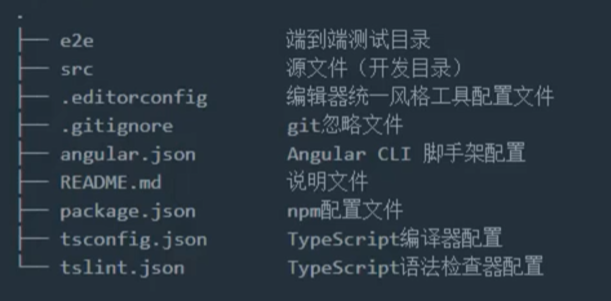
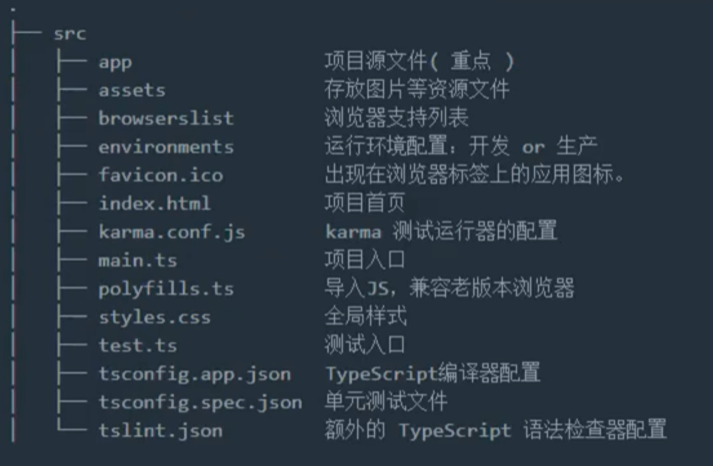

2. 初始Angular中的模块
2.1 模块中应包含的内容:
- 组件
- 服务
- 指令
- 注意:上面三个必须在模块中配置后才能使用!
2.2 例子说明
- 用
ng g m todo-list命令创建了 todo-list 模块
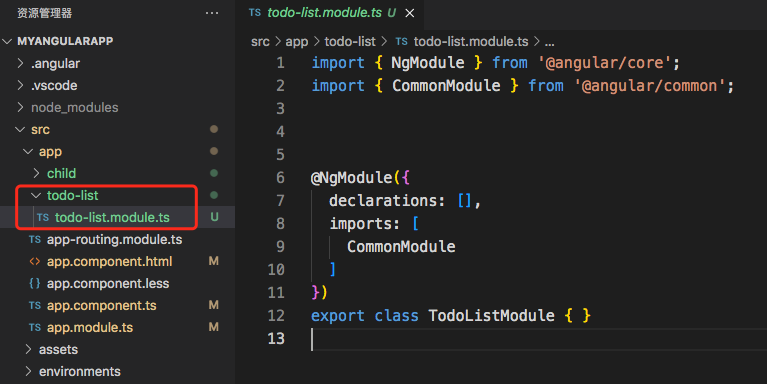
- 用
ng g c todo-list/componentName在该目录下创建了两个组件

2.3 模块导出和导入
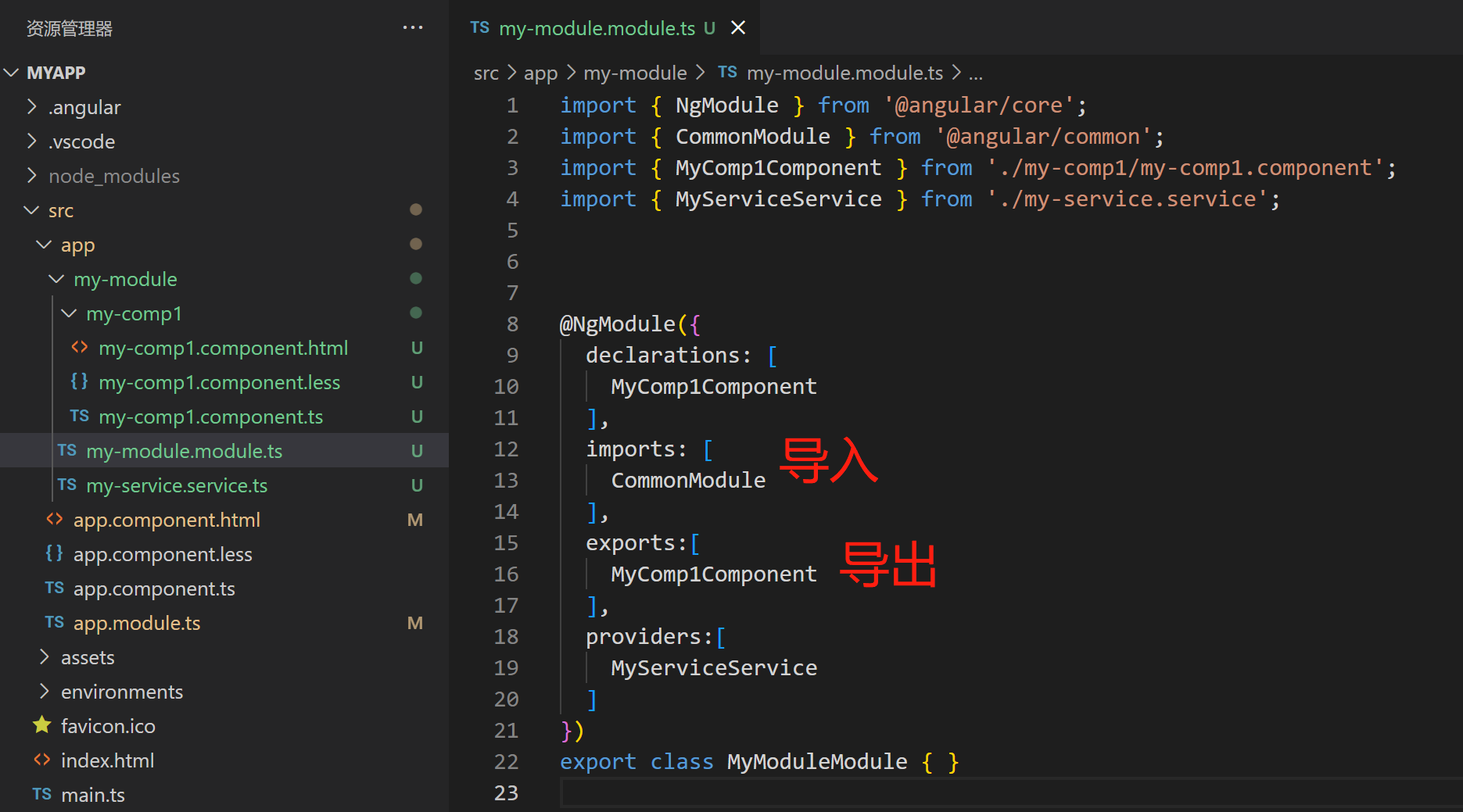
3. 指令
3.1 插值表达式 {{ }}
3.2 属性绑定
[propertyName] = "data"或propertyName = "{{ data }}"或propertyName = "string"
- 带 [ ] ,或不带 [ ],而用 {{ }},表示 data 是变量
- 不带 [ ],表示 string 是字符串
3.3 事件绑定
- 普通事件绑定:
(click) = "handleClick()" - 带事件对象的事件绑定:
(click) = "handleClick($event)", 模板中使用如下:
handleClick(e){
console.log(e)
e.preventDefault()//阻止默认行为
}3.4 双向数据绑定
[(ngModel)] = "modelData"- 注意:[(ngModel)] 指令是在angular的FormsModule模块中的,使用时需先在模块中导入该模块

3.5 [ngClass]
- 操作一个类名
//html
<p [class.redColor] = "isRed">111</p>
//ts
isRed = true;
//css
.redColor{
color:red;
}- 操作多个类名
//html
<p [ngClass] = "classObj">ceshi</p>
//ts
classObj = {
redColor: true,
myFontSize: false
}
css
.color{
color:red;
}
.myFontSize{
font-size:12px;
}3.6 [ngStyle]
- 操作 一个样式
//html
<p [style.color] = "colorName">111</P>
//ts
colorName = 'red';- 操作多个样式
//html
<p [ngStyle] = "styleObj">111</P>
//ts
styleObj = {
color: 'red',
fontSize:'12px'
}3.7 *ngIf
- HTML:
<h1 *ngIf = "isShow">111</h1> - TS:
isShow = false;
3.8 *ngFor
- 遍历普通数组:
<i *ngFor = "let item of Arrys; let i = index; let isOdd = odd"> {{ item }}--{{ i }}--{{ isOdd ? 奇 : 偶 }} </i> - 遍历对象数组:好处,提升渲染性能。
//html 加上 trackBy 意为跟踪自,这样当对象列表的局部数据改变的时候只重新渲染改变的数据
<i *ngFor="let item of nameList; trackBy: trackById"></i>
//ts
nameList = [
{ id: 1, name: 'xiaoming' },
{ id: 2, name: 'xiaohuang' },
{ id: 3, name: 'xiaolan' }
]
//加上这个方法
trackById(i:number,item:any){
return item.id
}
4. 组件嵌套
//父组件使用子组件,需要在父组件的module.ts文件中导入,并声明:
import { NgModule } from '@angular/core';
import { BrowserModule } from '@angular/platform-browser';
import { AppRoutingModule } from './app-routing.module';
import { AppComponent } from './app.component';
import { ChildComponent } from './child/child.component'; //导入
@NgModule({
declarations: [
AppComponent,
ChildComponent //声明
],
imports: [
BrowserModule,
AppRoutingModule
],
providers: [],
bootstrap: [AppComponent]
})
export class AppModule { }
5. 组件间通信
5.1 父传子
//父组件
//html
<!-- 父组件使用子组件,并传数据给子组件 -->
<app-child [myProp] = 'prop'></app-child>
//ts
import { Component } from '@angular/core';
@Component({
selector: 'app-root',
templateUrl: './app.component.html',
styleUrls: ['./app.component.less']
})
export class AppComponent {
prop = 'fatherData'
}//子组件
//ts
import { Component, Input, OnInit } from '@angular/core';
@Component({
selector: 'app-child',
templateUrl: './child.component.html',
styleUrls: ['./child.component.less']
})
export class ChildComponent implements OnInit {
constructor() { }
// 接收父组件传过来的数据
// 需用 Input 来声明接收,注意上面需导入Input
@Input()
myProp:any
ngOnInit(): void {
}
}5.2 子传父
//子组件
import { Component, Output,EventEmitter, OnInit } from '@angular/core';
@Component({
selector: 'app-child',
templateUrl: './child.component.html',
styleUrls: ['./child.component.less']
})
export class ChildComponent implements OnInit {
constructor() { }
// 要传输的数据
childData = 'someData'
// 1. 子组件 new 一个自定义 EventEmitter 事件
@Output()
put = new EventEmitter()
// 3. 子组件触发自定义事件,从而触发父组件的接收事件
handleClick(){
this.put.emit(this.childData) //参数是要传输的数据
}
ngOnInit(): void {
}
}//父组件
import { Component } from '@angular/core';
@Component({
selector: 'app-root',
// 2. 在父组件中使用子组件的自定义事件,并绑定接收函数
template: `<app-child (put)="get($event)"></app-child>`,
styleUrls: ['./app.component.less']
})
export class AppComponent {
mydata:any
// 4. 接收数据处理函数
get(data:any){
this.mydata = data
}
}
6. 服务
6.1 服务的作用说明
- 组件应该只提供用于数据 绑定的属性和方法
- 组件不应该定义任何诸如请求数据、验证用户验证等操作
- 应该把各种处理任务定义在可注入的服务中
- 服务的作用:处理业务逻辑,供组件使用
6.2 服务的说明
- 通过 @Injectable()装饰器 来表示一个服务
- 服务需要注册提供商才可使用
- Angular通过依赖注入(DI)来为组件提供服务,即在组件中注入服务依赖,不需手动创建
- 推荐在 constructor 中注册组件中用到的服务
6.3 注册服务提供商的三种方式
(1)在服务文件中,通过 @Injectable() 的 providedIn: 'root', 将该服务注册为跟级提供商,提供给该项目中所有组件使用
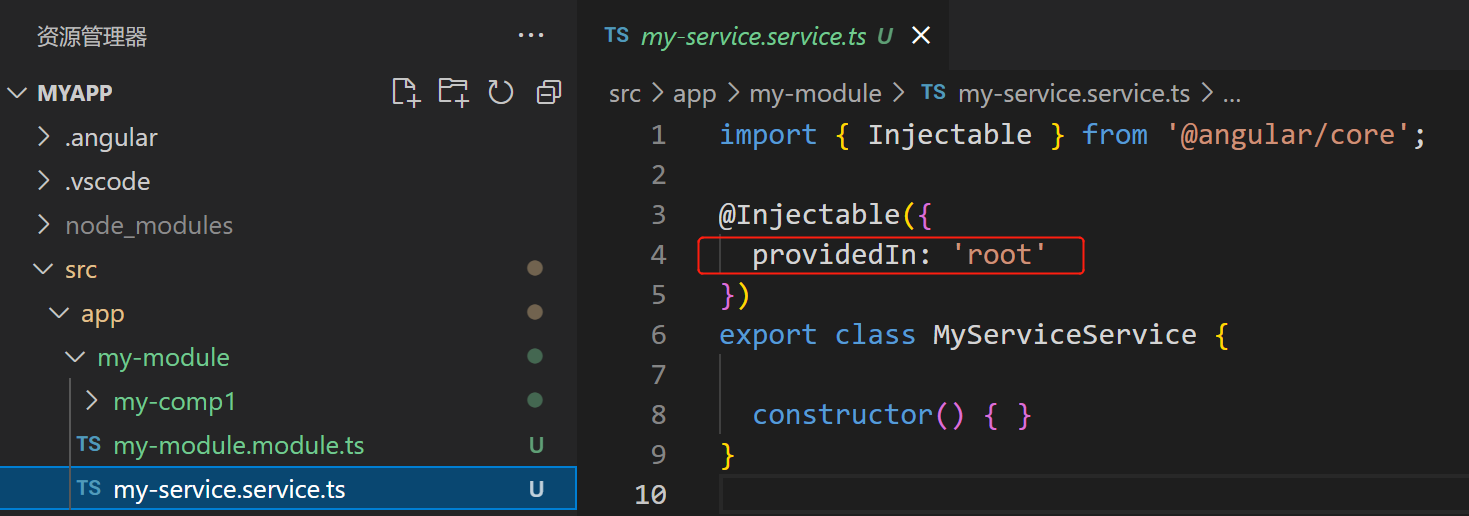
- 组件中注入并注册需要用到的服务,如下图:
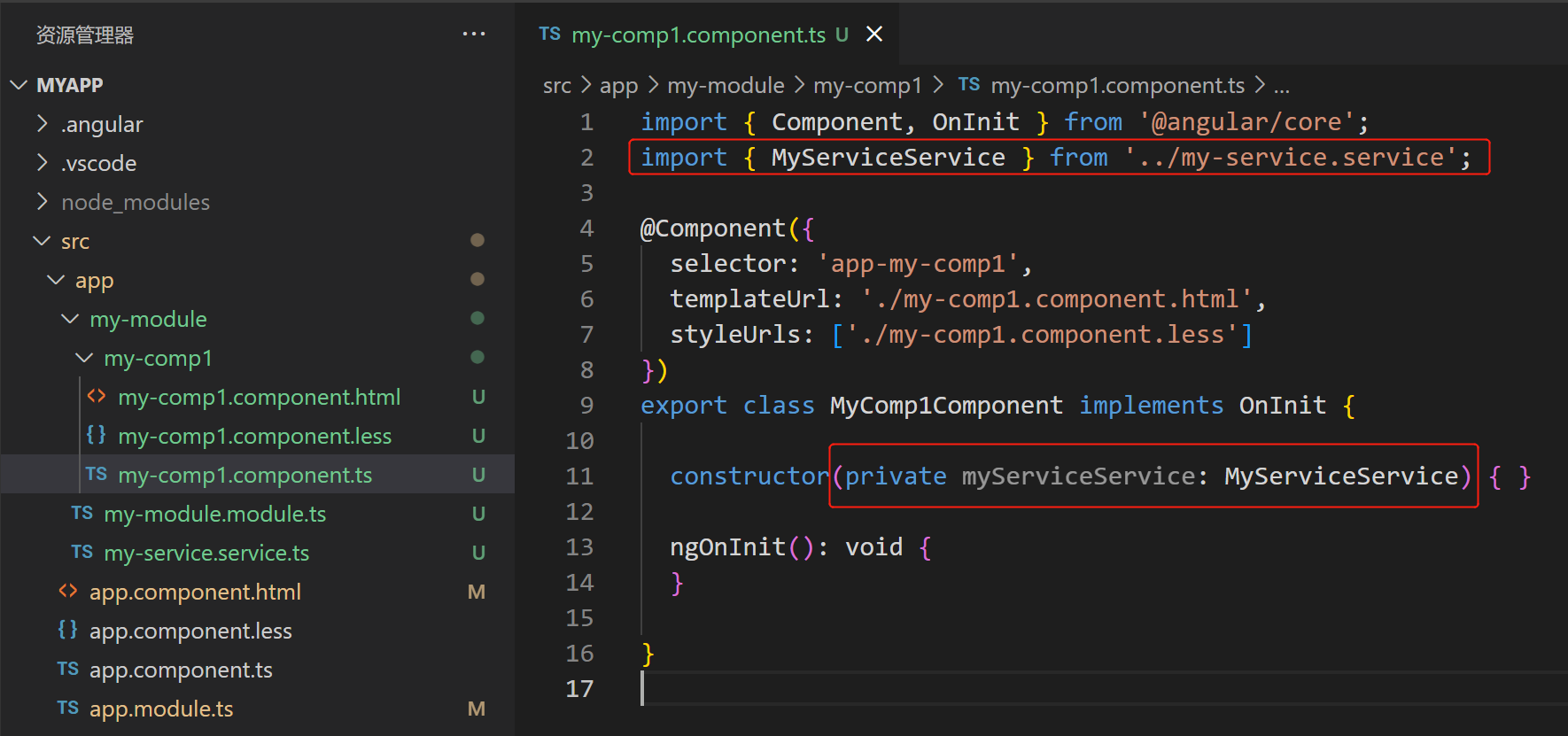
(2)在模块文件中,通过 @NgModule() 的providers:[], 注册为该模块内可用的提供商,仅提供给该模块内组件使用

- 组件中注入并注册需要用到的服务,如下图:

(3)在组件文件中,通过 @Component 的 providers:[], 注册为仅该组件以及其子组件可用的服务提供商
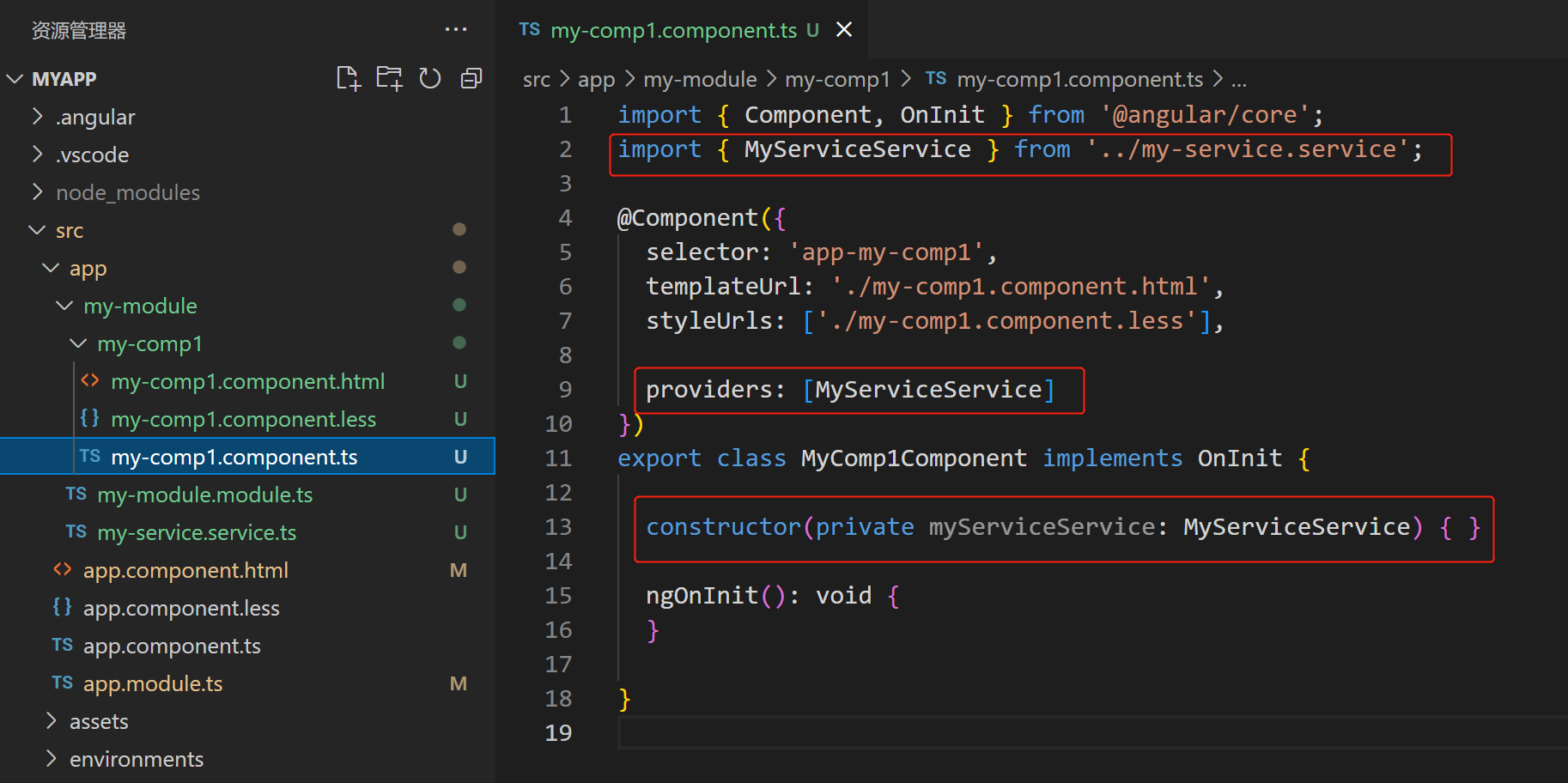
7. HttpClient说明
作用:发送Http请求
- 封装了浏览器提供的XMLHttpRequest接口
- 使用基于可观察(Observable)对象的API
- 提供了请求和响应拦截器流式错误处理机制
7.1 HttpClient的使用
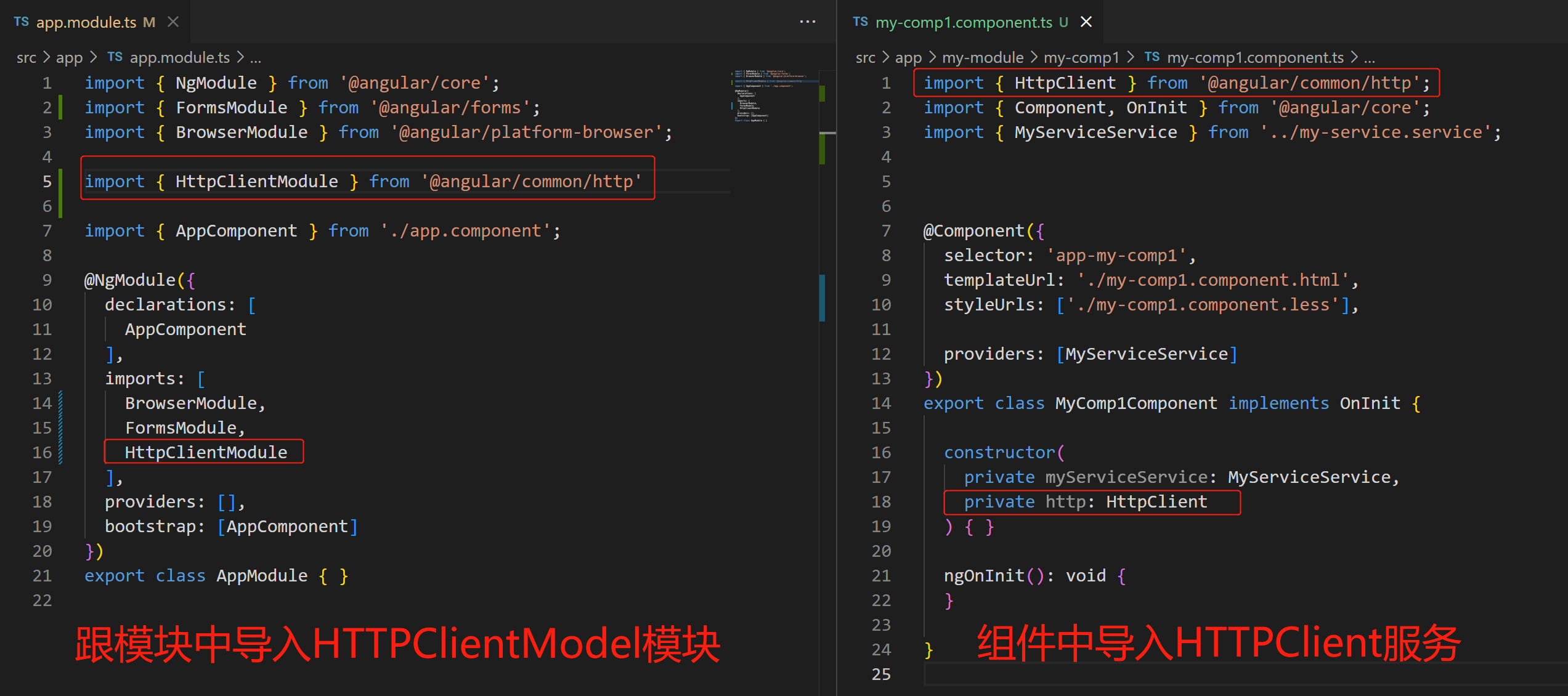
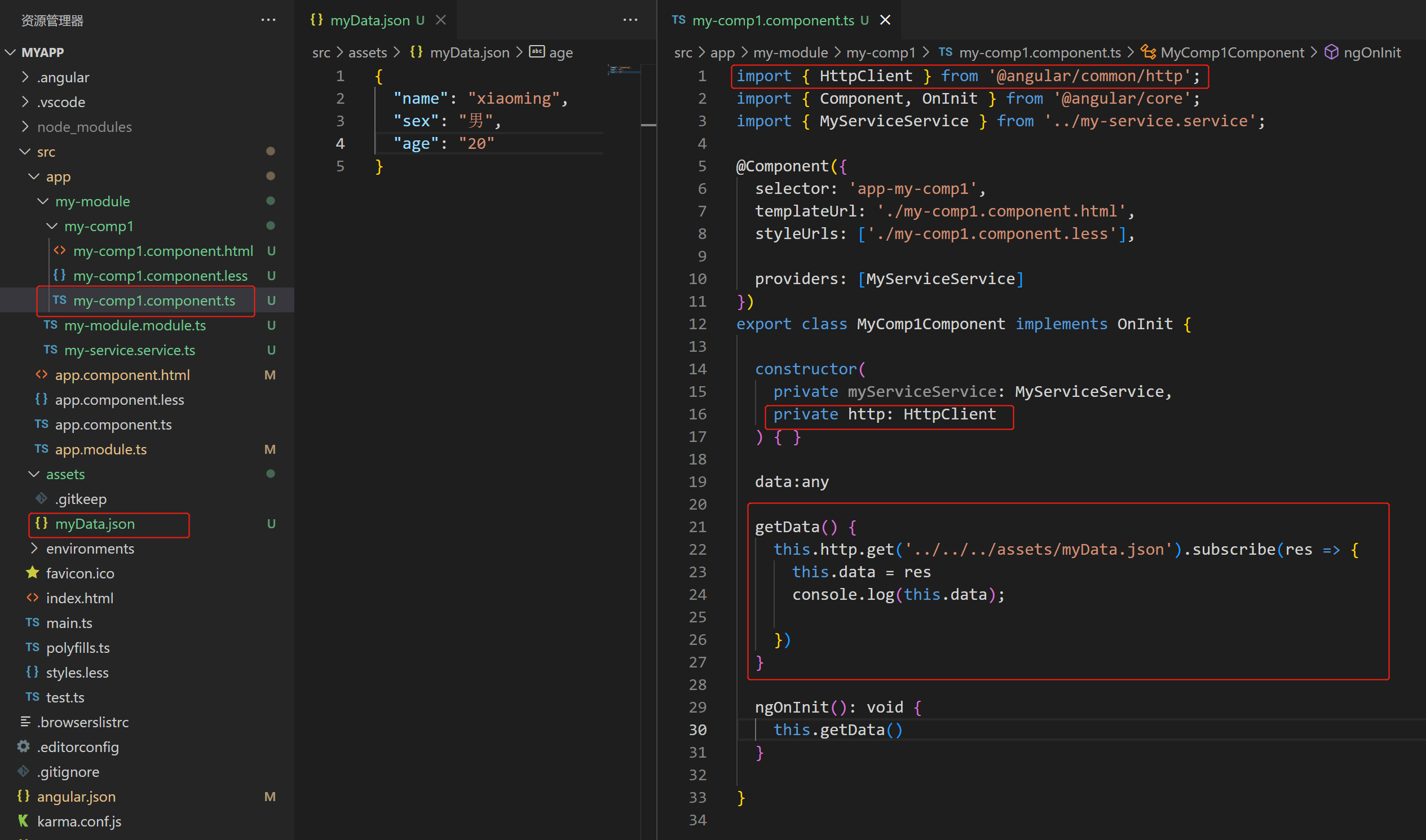
7.2 获取 完整的HTTP相应内容
// 在请求地址后加上 { observe: 'response' }
getData() {
this.http
.get('../../../assets/myData.json', { observe: 'response' })
.subscribe((res) => {
console.log(res); // 所有响应内容
console.log(res.body); // 响应body
console.log(res.headers); // 响应头
console.log(res.headers.get('content-type')); //响应数据类型
console.log('等等');
});
}7.3 使用TS语法对响应数据做约束
- 对 get 请求和响应的 res 进行双重约束:
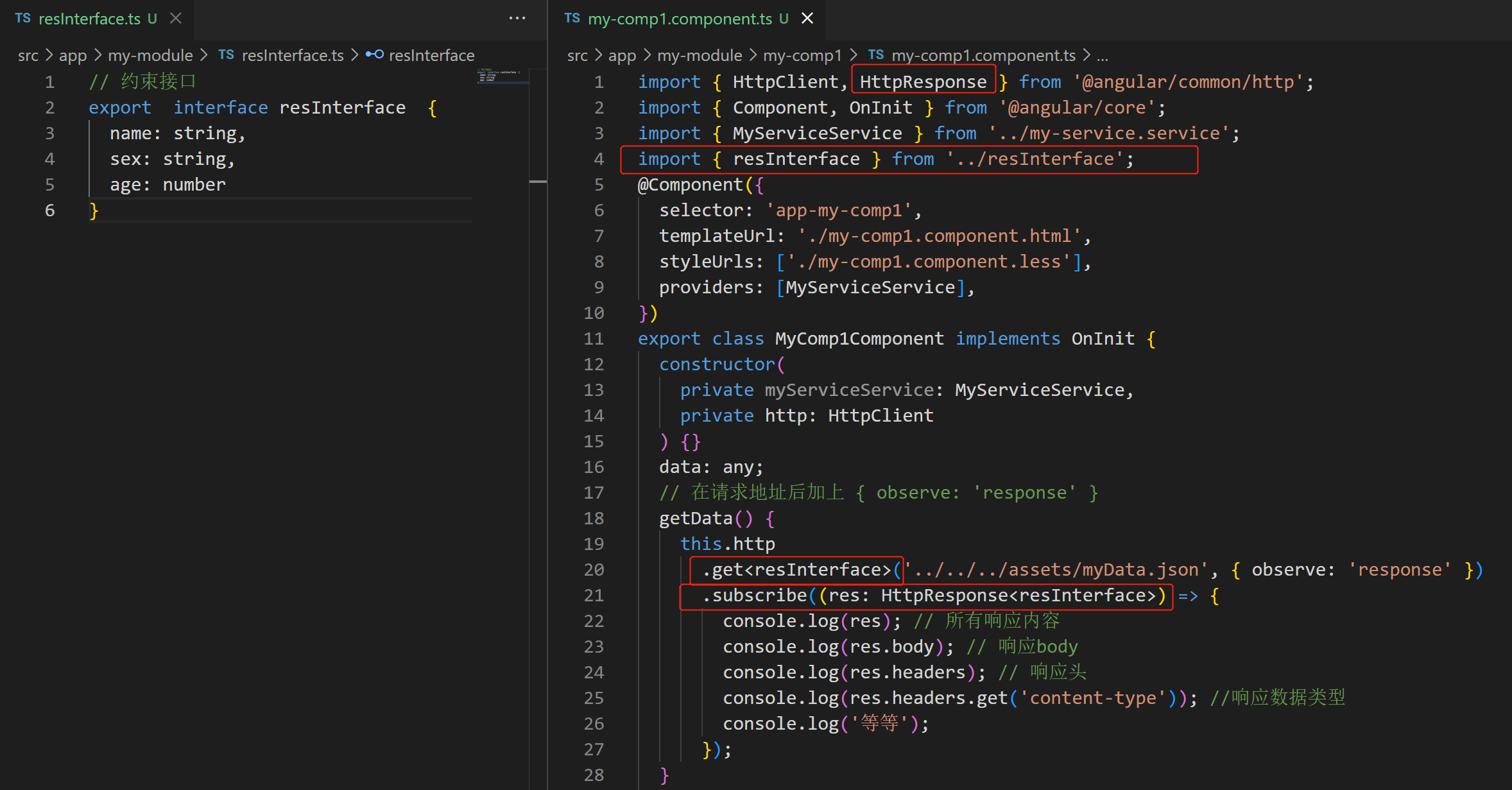
7.4 请求失败回调
getData() {
this.http.get<resInterface>('../../../assets/myData.json1').subscribe(
(res: resInterface) => {
console.log(res); // 所有响应内容
},
(err) => { // 失败回调
console.log(err);
}
);
}7.5 使用 json-server 插件来模拟提供后台接口
- 1. 安装:
npm i -g json-server - 2. 新建一个 json 文件,如 db.json
- 3. 运行 json-server :
json-server db.json - 4. 请求如下:
get('url地址')
post('url地址',{参数:'参数值'})
delete(`{$this.url}/id值`)
patch(`{$this.url}/id值`,{参数:'新值'})
8. 路由
8.1 配置路由的基本步骤
- 模块module文件内:
import { MyComp1Component } from "./my-module/my-comp1/my-comp1.component";//导入组件
// 1. 导入路由模块
import { RouterModule, Routes } from "@angular/router";
// 2. 配置路由规则,并用 Routes 约束路由格式
const appRouters: Routes = [
{
path: 'mycomp1',
component: MyComp1Component
}
]
@NgModule({
declarations: [
AppComponent,
MyComp1Component,//导入使用路由显示的组件
],
imports: [
// 3. 配置路由模块,forRoot() 的作用是保证路由服务的单例行,防止路由多个服务错乱
RouterModule.forRoot(appRouters)
],
providers: [],
bootstrap: [AppComponent]
})
export class AppModule { }- HTML文件路由出口
<!-- 4. 配置路由跳转导航 -->
<button routerLink="/mycomp1">显示myComp1组件</button>
<!-- 5. 配置路由出口 -->
<router-outlet></router-outlet>8.2 默认路由、重定向、通配符路由
const appRouters: Routes = [
{
// 默认路由、重定向
path: '',
redirectTo: '/mycomp1',
pathMatch: 'full'
},
{
// 通配符路由,当访问不存在的路由的时候跳转到404页面
path: '**',
component: NotFoundError
},
{
path: 'mycomp1',
component: MyComp1Component
}
]8.3 路由参数
// 一、配置路由文件:
const appRouters: Routes = [
{
// 路由参数
// 可匹配:/perName/1 /perName/2 ...
// 不可匹配: /perName /perName/1/1 ...
path: 'perName/:id',
component: PerNameComponent
}
]
// 二、导航HTML
<button routerLink="/perName/1">点击1</button>
<button routerLink="/perName/2">点击2</button>
// 三、路由组件TS文件
// 1. 导入路由服务
import { ActivatedRoute } from '@angular/router'
export class PerNameComponent implements OnInit {
constructor(
// 2. 声明
private route: ActivatedRoute
)
selectObj = [
{ id:1, name: 'xiaoming' },
{ id:2, name: 'xiaolan' }
]
activeName:any
ngOnInit(){
this.route.paramMap.subscribe(param => {
console.log(param)
const id = param.get('id')//得到路由参数
this.activeName = this.selectObj.find(item => item.id === +id) // 将字符串类型的 id 转换成 数字类型的
}
// 四、路由组件HTML
<div>{{ activeName }}</div> 8.4 路由嵌套
// 路由配置文件
const appRouters: Routes = [
{
path: 'father',
component: MyComp1Component,
// 子路由
children: [
path: 'child1',
component: Child1Component
]
}
]
// HTML
<a routerLink = "/father/child1">点击</a>
<router-outlet></router-outlet>8.5 路由高亮
// HTML
<a routerLink="/mycomp1" routerLinkActive="actived">点击1</a>
<a routerLink="/mycomp2" routerLinkActive="actived">点击1</a>
// 表示路由精确匹配
<a routerLink="/mycomp3" routerLinkActive="actived" [routerLinkActiveOptions]="{exact: true}"></a>
// css
.actived {
color:red
}
9. 编程式导航
// 1. 导入 Router
import { Router } from '@angular/router'
export class MyComp1Component implements OnInit {
constructor(
// 2. 声明
private router: Router
) {}
// 3. 使用
goTo() {
this.router.navigate(['/mycomp1'])
}
ngOnInit(): void {
}
}
10. 响应式表单
- 响应式表单(重点)
- 模板驱动表单(基于模板语法,及双向数据绑定指令,如Angular中的 [ngModel]、Vue中的 v-model
基本使用步骤:
// 一、模块文件:
// 1. 导入
import { ReactiveFormsModule } from '@angular/forms';
@NgModule({
declarations: [
],
imports: [
// 2. 声明
ReactiveFormsModule
],
providers: [],
bootstrap: [AppComponent]
})
// 二、TS文件
import { Component } from '@angular/core';
// 3. 导入
import { FormControl } from '@angular/forms'
@Component({
selector: 'app-root',
templateUrl: './app.component.html',
styleUrls: ['./app.component.less']
})
export class AppComponent {
// 4. new
username = new FormControl('zrh')
password = new FormControl('123456')
// 取值
console.log(this.username.value)
// 更新值
setUsername() {
this.username.setValue('newName')
}
}
// 三、HTML
<label>
用户名:
<input type="text" [formControl]="username">
</label>
<p>{{username.value}}</p>
<label>
密码:
<input type="password" [formControl]="password">
</label>
<p>{{password.value}}</p>更多请参考官网文档!
本文来自博客园,作者:RHCHIK,转载请注明原文链接:https://www.cnblogs.com/suihung/p/16398745.html






 浙公网安备 33010602011771号
浙公网安备 33010602011771号